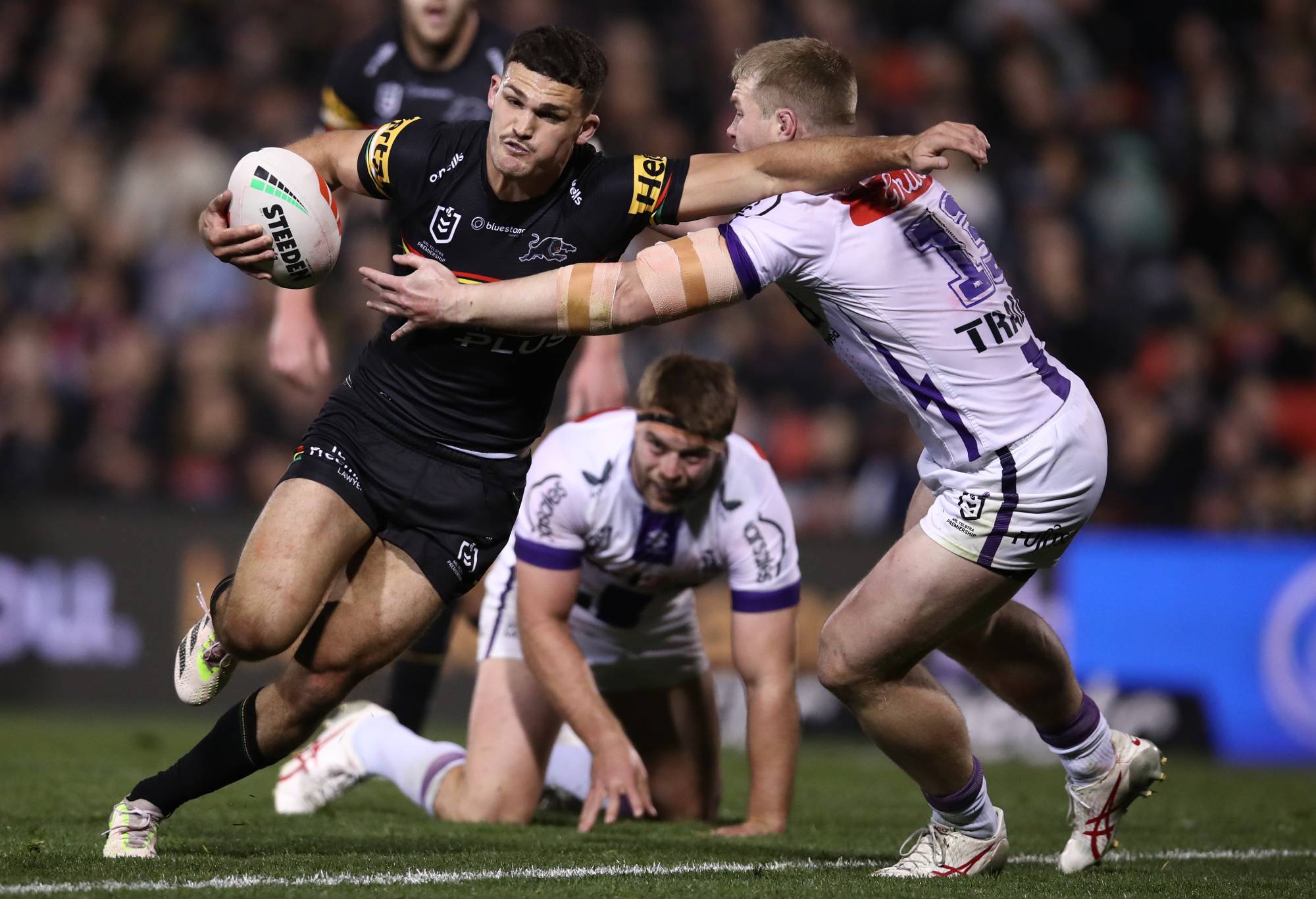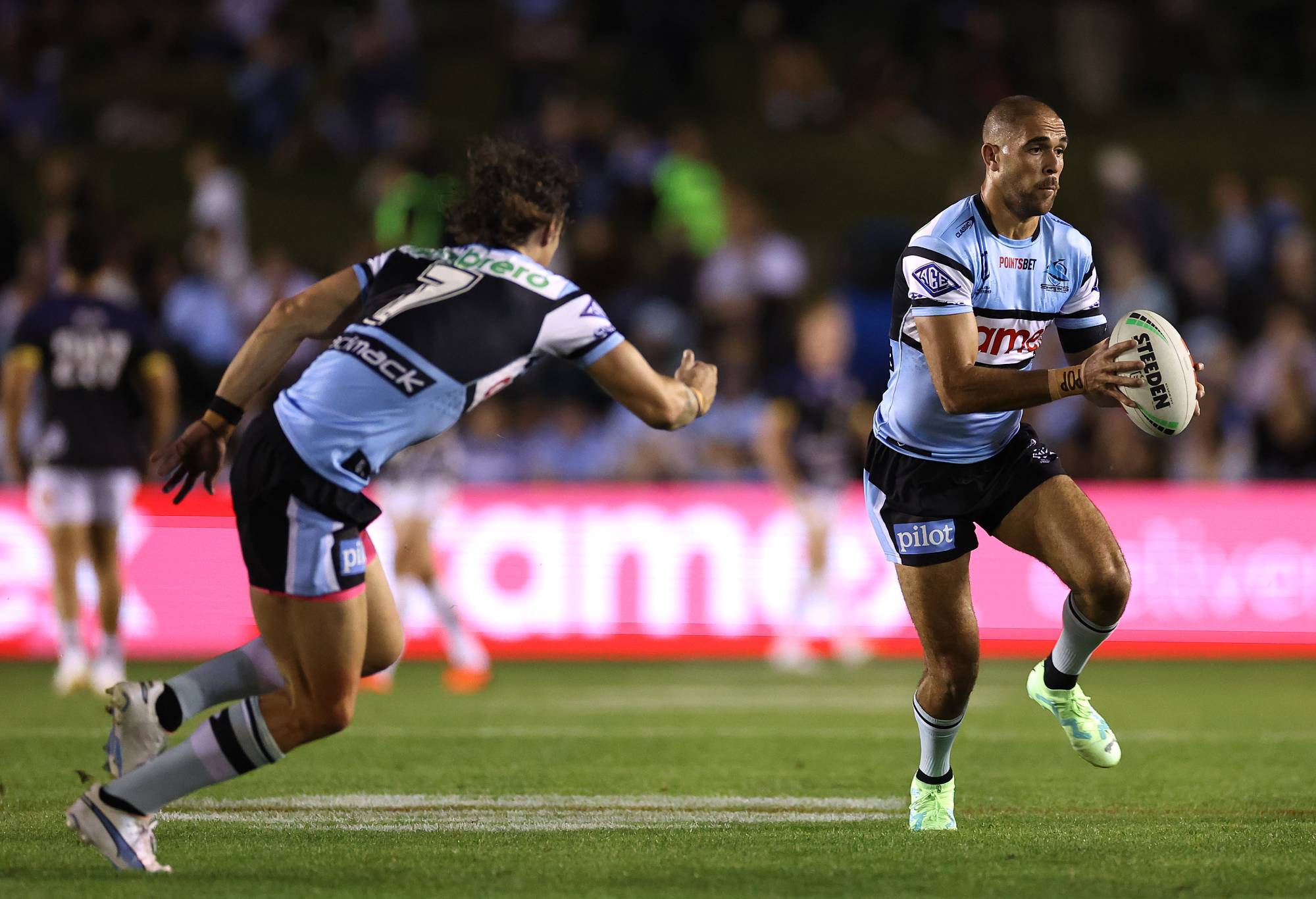If you’d have asked the average punter in the mid-2010s what the main problem with the game of rugby league was, there’s a high chance that they might have mentioned how the game was overstructured and, as a result, boring.
It became a bit of a buzzword for a while. The preponderance of repeated block shapes really riled up a certain type of fan, usually the sort that also lamented the demise of the little man and the end of the chip and chase.
They weren’t wrong: back then, the lock forward was just another basher, teams tried to grind each other to death and win through exploiting mistakes. There’s no right or wrong way to play, but there are styles that lean towards defence more than attack, and that era was certainly one slanted in favour of conservatism.
That it was seen as boring was one of the main reasons that the set restart rule was brought in.
Prior to the six again era, it made sense for coaches to favour highly structured play and minimising risk and consequently, removing the improvisational, heads-up footy that fans love. When it comes off, it looks great, and fans don’t get sacked if their team loses.
Coaches, and the players that coaches tell what to do, do suffer the consequences. Rugby league is a professional sport and that means you have to win, so going for high-risk, low probability plays is anathema to those that live and die by the result.
The rules changes of 2020 over-corrected, however. As much as heads-up foots came back to the game, it was only because defences were so tired from all the shuttle runs that they couldn’t defend anymore.
In 2021, that manifested in Tom Trbojevic (and others) running through demoralised tacklers like a big kid in the under-12s.
Lots happened, but it wasn’t that exciting. Some pined for the days of the block play and, before that, the wrestle, because at least the result was close.
Since 2022, however, we’ve seen a subtle but noticeable change in the way that coaches are coaching, and that players are improvising. We’re seeing the structure really take hold again, but with heads-up built into it. We’re seeing patterns.
It’s controlled improvisation, structure built to create a platform for unstructured play. It takes the good bits of the block structure and combines them with the learnings of the set restart era to create something new, a hybrid that allows teams to fully commit to a coach’s philosophy.
A lot of it comes down to the newer breed of coaches, the likes of Craig Fitzgibbon, Jason Demetriou and Andrew Webster – who have only coached in the six again era – as well as an influx of new voices in the backrooms that are increasingly being heard.
Players are now given every piece of data and video imaginable to help them make decisions, and whole structures are built that, instead of simply getting the team to move in concert, are designed to manipulate opponents and create match-ups that deliver results.
If you speak to Trent Robinson about coaching philosophy, you’ll likely get an answer that involves the word ‘principles’ or ‘values’, the core tenets that he wants to see enacted in what he also calls – granted, quite a woolly phrase in 2023 – ‘Roosters Football’.
Watching Souths or Cronulla – and, latterly, Brisbane and Manly – you’re more likely to see patterns, repeatable moves that happen time and again, with the idea that you can compartmentalise the game into set plays, even when there aren’t actually set plays.
That isn’t to say that certain teams have patterns but not principles, or indeed, the other way around, but that there is certainly a weighting in terms of what they think is more important.
The difference is generally found in attack, where a team has far more control over the game by dint of being the ones with the ball, but it holds true in defence, too.

Sharks coach Craig Fitzgibbon. (Photo by Mark Kolbe/Getty Images)
Defensive principles are something almost all coaches can agree on and generally come down to the motivation/expectations aspect, whereas patterns are a bit more difficult to pin down, as you’re always reacting to the opposition in front of you, and are thus more readily characterised as ‘systems’ rather than ‘patterns’.
With the ball, there’s a third element that needs to be differentiated.
There’s ‘plays’, set moves that every team has – think the Cooper Cronk to Billy Slater inside pass as a classic example – and compare it to ‘patterns’, such as the Cronulla early shift to the right or the Broncos sweeping to Reece Walsh to create an overload.
The first is a move with pretty simple moving parts and a specific call, one that might happen once or twice a game. Part A feeds Part B who feeds Part C.
The second is a planned set of events that can be adapted infinitely, more of a repeatable, sustainable attacking strategy. If we get to x, we do y, then the most creative players take it from there.
With pattern play, the possibilities are endless but the basics highly sustainable. Teams practice them endlessly so that they work almost every time. The downside, of course, is the element of surprise.
The Melbourne inside out play was well known, but almost always a surprise when they put it on because it was one play in a game over 150 tackles and invariably not expected.
When Souths hit a right tramline on tackle 3, you pretty much always know what they’re thinking of doing. That, in all likelihood, is the next step, when the analysts see the patterns and react. But we’re not quite there yet.
Automatic for the people
There’s been an interesting development in soccer tactics over the last five years or so that plays into this: automatisms.
For the non-soccer nerds, a brief explanation. When a team has the ball in defence, their opposition will often defend high up the pitch to try and win it back in the offensive third, known as a high press.
As more teams try a high press, some attempt to ‘bait’ that press by holding the ball with their defenders close to their own goal, before unleashing a series of passes that ‘beat’ the press and quickly transmit the ball up the field to create an overload in the attacking areas.
The series of passes in the middle is the ‘automatism’, because the team with the ball can practice their pattern of play in advance, increasing the likelihood of success.
Essentially: this player gets pressed here, so they pass there, and before the second player has got the ball, a third is in motion to immediately to a pre-planned location where the second knows they are going. It looks improvised, but absolutely isn’t.
If you’ve watched Roberto de Zerbi’s Brighton in the Premier League, this is what they’re trying to do. They’ll often have a centre back stand with his foot on the ball in their own half to try and convince a team to press them higher, before kicking into action, perfectly choreographed.
In rugby league, we see this more and more. Souths have done it for ages – perhaps for so long that other teams have worked it out – as have Cronulla, but now we can see Brisbane, Manly and the Warriors working on clear automatisms too.
The function of a lot of the patterns is to move the defensive line around, creating space where the attack wants it to be in order to hit that area.
A lot of this is from the previously mentioned idea of ‘pinning’, in which defences are held tight via either ball-carriers who go very close to the line (Souths) or decoy runners who force them to stay narrow, which is what the Sharks and the Warriors have been doing.
The pinning, done right, allows what coaches call ‘condensing the line’, creating spaces at the corners. If the teams don’t condense, then the space opens up inside instead.
This has been one of the greatest advancements in what the Broncos have done with their attack in 2023.
They were already among the best ‘transitional’ teams in the NRL last year, excelling on plays 1,2 and 5 through their superb set starts and ends, but would get lost in the middle part of the set, ultimately blunting their attack.
Now, they’re still good at the front and back end of sets, but have added a mid-set pattern that allows them to attack from deep if the opportunity arises, with Walsh’s speed able to be maximally used.
Watch this, from their recent win over Souths. They’re on play 2 and hit the left tramline with Adam Reynolds at first receiver with Walsh stood behind him.
When the ball comes, they have both Payne Haas and Pat Carrigan run decoys, forcing Souths to condense the line, which opens up the ‘tunnel ball’, as it is called, to Selwyn Cobbo for a try. It’s magical stuff, and the opposite of spontaneous.
Later in the same match, the same play comes again, with Reynolds to Walsh behind Carrigan, but this time the defence doesn’t condense and the fullback slices through to score himself.
That’s why it’s a pattern, not a play: they’re building a structure with options within it.
The patterns are both with the ball, in terms of being able to enact automated structures of play, but also off it, with the runners knowing where they need to be and at what moments.
If you want proof, go look at how many times Walsh has thrown the ball directly over the sideline. The improvisation can and will go wrong, and that’s fine.
They don’t track ‘passes chucked directly over the sideline’, but the eye test would suggest that Cody Walker and Walsh would be numbers one and two for it.
Kevin Walters will back his man to throw that pass and get it right enough times to make it count, while not caring if he does it anyway because errors don’t matter if you’re making them while trying to score.
Qualitative v quantitative advantage
To return to the differences between the principles and patterns idea, it might go a long way to work out why the Broncos have succeeded and the Roosters – and to a lesser extent, the Storm – have failed.
The point of attacking strategy, at the highest level of thinking, is to deliver either a quantitative advantage – a two on one, a three on two – or a qualitative advantage, a mismatch in either size, speed or skill.
As with patterns and principles, there are no absolutes, but in general, Robinson and Craig Bellamy have built sides for the latter.
There’s nothing wrong with that, of course, and it goes a long way to understanding why they have been successful over such a long period of time.
Getting Cameron Munster or James Tedesco into an optimal position – or Nelson Asofa-Solomona or Joey Manu up against a half – makes perfect sense, and allows a good coach to construct a squad within a salary cap where the top line talent is entrusted to get the job done and a lowest paid member is still pretty good, ideal in a weak-link sport like rugby league.
Penrith manage to combine both of these aspects, with really defined attacking patterns through Isaah Yeo and Nathan Cleary – so well defined you just take them as gospel these days – as well as principles that allow the next man up to kick in. That’s why they’re about to win a third comp in succession.

(Photo by Jason McCawley/Getty Images)
The pattern teams are largely concerned with the quantitative stuff, the manipulation of space on the field.
Soccer nerds might again notice this as ‘positional play’, where space trumps individuals, and without going into another 2,000 words on that, the idea is that the collective creates situations that the individuals can exploit.
We see this all over the NRL at the moment, especially in the teams that have one or two clear superiorities.
Manly have a superstrength in Tolu Koula and Jason Saab, two of the absolute fastest players in the world, so play towards that through quick central rucks and fast shifts.
Souths have the best finisher, Alex Johnston, and the best assister in Latrell Mitchell, so they created replicable ways of getting one passing to the other on the left.
Cronulla can play with what are essentially three fullbacks, so built a strategy around those players having the ball in two hands against a back-pedalling defence, able to go either way.
Brisbane might have the best of all: they have a superstrength with Walsh, probably the fastest fullback in the NRL, plus the best middle engines in Haas and Carrigan, plus Adam Reynolds, one of the best playcallers.
Their ability to harness those four aspects together collectively is perhaps the single best explanation for their success in 2023.
Theoretically, it shouldn’t matter if your centre isn’t as good as Joey Manu if all they have to do is pass around him. It’s about replicable strategies that can transcend injuries, form and other variables.
Obviously, the patterns work best with the best components, but the idea that you have system that can be sustainable across 27 rounds and Finals is built on being able to do it without the best all the time.
The Bunnies have struggled in this regard, because theirs clearly doesn’t work as well without Latrell, but this column predicted a huge drop-off from Will Kennedy to Connor Tracey – which hasn’t happened – and the Broncos did absolutely fine in the time that Walsh was replaced by Tristan Sailor.

(Photo by Cameron Spencer/Getty Images)
Indeed, taking the best parts out of a pattern play style should be less damaging than in a more qualitative team, where the drop off from Munster to anyone else is huge.
The question remains whether it can work in the most important games, where defences are better and elite talent tends to win the moments.
Cronulla finished second last year and bombed out of the finals in straight sets as a cautionary tale.
Strong pattern sides look brilliant when they are on – often versus poor sides, too – but can be put off their rehearsed aspects by defensive units that see it coming and are good enough to respond.
The next step will likely be when the opposition analysts get enough looks at the patterns to set traps for them.
Souths have clearly struggled to enact their patterns now that everyone knows what they like to do, and will have to think of variations on variations to keep opponents on their toes.
We’ve seen teams try that with the Panthers, using the old-fashioned umbrella to limit how much time Yeo gets on the ball, and Ivan Cleary responding in kind with different structures of his own.
Both St Helens and Brisbane managed to nullify it early in the year, before Penrith altered what they did to counteract the defence.
That’s the delicate balance of it all. The game is played out by the analysts in theory then the players in practice, with each pattern prompting a counter pattern from the defence to deal with it. The best will stay one step ahead.































































































